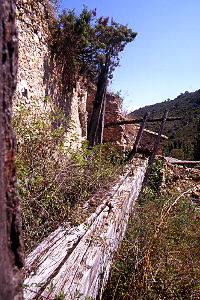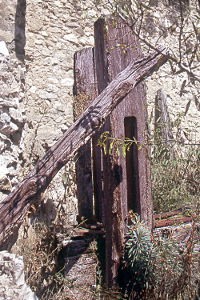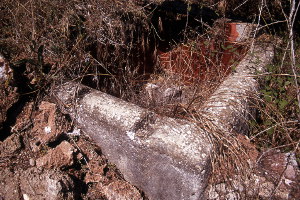Path: Introduction -
Visit the mills; catalogue - Aguinalíu in 2013

Mills in Alto Aragón — molino aceitero
Aguinalíu

Aguinalíu is easily reached from the main road between Graus and Benabarre. After about 5 km you'll find a branch to Aguinalíu — just before Torres de Obispo (Molino). This is a narrow winding road running to the south. After a while you'll dive under the main road between Barbastro and Benabarre. It's then another 4 km to your destination. Drop your vehicle at the crossroads at the entrance of the village and walk the branch to the south. You'll soon find the mill: el
Torno de las Olivas.
Pictures: 17.viii.2013







